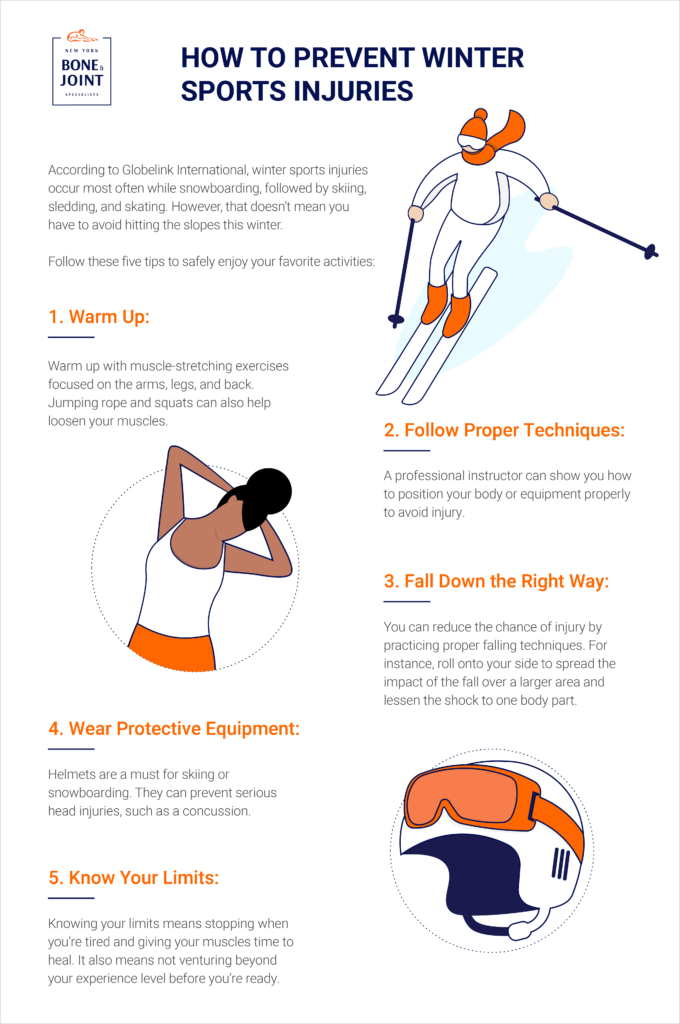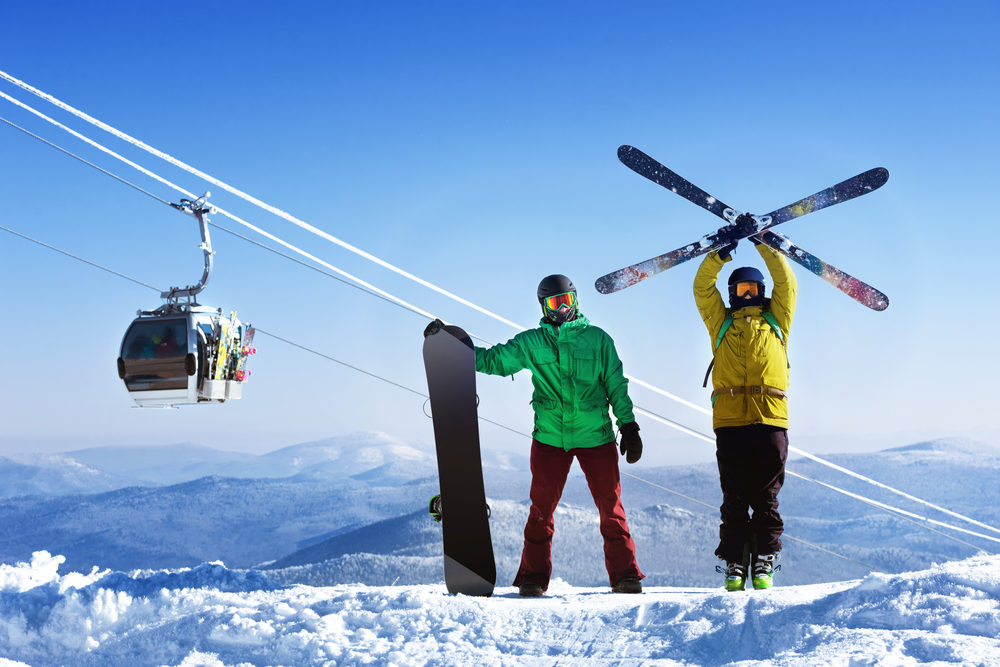Ski and snowboard season has arrived! But before you hit the slopes, learn how to prevent serious injuries.
As snow piles up this winter, skiers and snowboarders are hitting the slopes to relish in their favorite seasonal workout. Unfortunately, along with the exhilarating exercise comes the possibility of serious injury.
According to Globelink International, winter sports injuries occur most often while snowboarding, followed by skiing, sledding, and skating. However, that doesn’t mean you have to give up on your favorite winter sports. Rather, with some preventative tips, you can hit the slopes safely.
Common Winter Sports Injuries
For skiers, the most common injuries are torn knee ligaments. A tear of the medial collateral ligament (MCL) or the anterior cruciate ligament (ACL) can occur after a fall, especially if a ski gets stuck in the snow. Falling is also a common cause of wrist or ankle fractures.
Similarly, snowboarders are susceptible to ankle and wrist fractures from falling. In fact, fractures of the Talus bone — the bone located above the heel bone on the outside of the ankle — are so common among snowboarders that the injury is now known as snowboarder’s ankle.
Sprains and strains of the back muscles affect both skiers and snowboarders, as well. Further, if you fall directly on your shoulder or try to break a fall with your arm, you run the risk of dislocating your shoulder. In addition to severe pain, a shoulder dislocation limits your arm’s range of motion, and must be treated immediately to prevent a frozen shoulder.

How to Prevent Winter Sports Injuries
Taking some precautionary measures can help you avoid common sports injuries. Follow these five tips to safely enjoy your favorite activities:
- Warm Up. Cold and inflexible muscles increase the risk of injury in any sport. Before you hit the slopes, warm up with muscle-stretching exercises focused on the arms, legs, and back. Jumping rope and squats are other pre-skiing workouts that can help loosen your muscles.
- Follow Proper Techniques. Working with a professional instructor can prevent serious injuries. An instructor can show you how to position your body or equipment properly to avoid spills in the snow.
- Fall Down the Right Way. Falls while skiing or snowboarding are inevitable. However, you can lessen the chance of an injury by practicing proper falling techniques. For instance, attempting to stop your fall with an outstretched hand risks a wrist fracture. Instead, roll onto your side to spread the impact over a larger area of your body and lessen the shock to one body part.
- Wear Protective Equipment. Helmets are a must if you take to the slopes to ski or snowboard. They can prevent serious head injuries, such as a concussion. Make sure the helmet has a shock-absorber layer and is made of strong material. Don’t forget to check your equipment for any defects. A loose binding on your skis could lead to a fall, for example.
- Know Your Limits. Knowing your limits means stopping when you’re tired and giving your muscles time to rest and heal. It also means not venturing beyond your experience level before you’re ready. Don’t attempt a more difficult trail until you are sure you can handle the advanced runs.
Stay Safe This Winter
If you suffer an injury while skiing or snowboarding, the doctors at New York & Joint Specialists can help you plan an effective treatment program. Our staff can also provide you with more preventative tips to ensure you get the most out of your wintertime workout. Call us today to set up an appointment.




